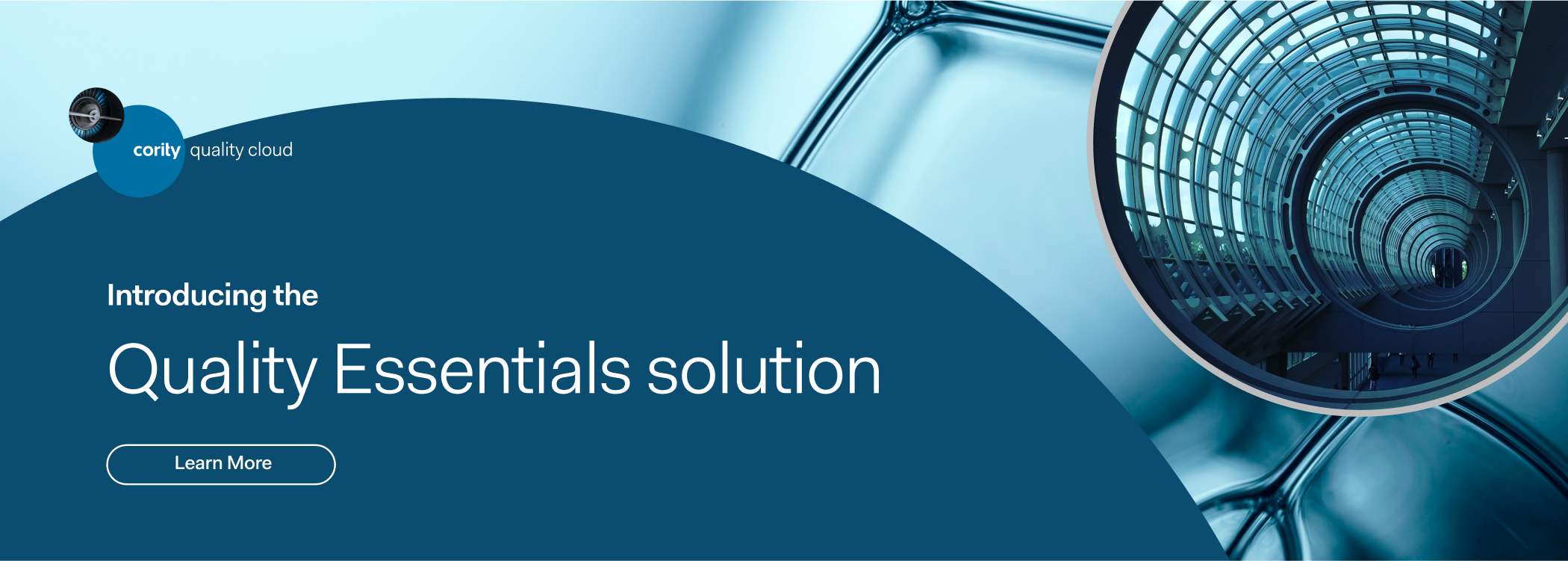In our previous blog, Exploring the Relationship Between Quality and Safety, we evaluated the connection between quality and safety within an organization and how the two work in tandem to keep employees safe and operations running smoothly. However, to manage these intertwined needs effectively and cohesively, many organizations are choosing to invest in a quality and safety management solution from a single provider.
The notion of a single-provider solution is based on the belief that quality and safety management should not be separate entities but rather should work together in a harmonious manner. This approach simplifies the management of essential processes, resulting in increased efficiency, cost-effectiveness, and adaptability to the ever-changing demands of the modern business landscape.
Therefore, in this blog, we will review:
- Significant advantages of embracing a single-provider solution for quality and safety management
- The top things to consider when evaluating quality and safety management solutions
Benefits of a Single Quality and Safety Management Solution
The notion of a single-provider solution is based on the belief that quality and safety management should not be separate entities, but rather should work together in a harmonious manner. This approach simplifies the management of essential processes, resulting in increased efficiency, cost-effectiveness, and adaptability to the ever-changing demands of the modern business landscape.
Here are several benefits to using a single Quality Management and Safety Management (QMS/SMS) solution:
Seamless Integration:
Solutions from a single provider are purposefully designed to work together seamlessly. This ensures that quality and safety data are effortlessly integrated and synchronized, providing users with a unified view of all quality and safety performance data. This integrated approach saves valuable time and effort, eliminating the need for manual data transfers between different systems.
Reduced Complexity:
Procuring a solution from a single provider significantly reduces the complexity of the IT landscape. This simplification not only makes system management and maintenance more straightforward but also has cost-saving implications. Dealing with a single vendor for support and training streamlines IT processes, making it easier to navigate.
Enhanced Support:
With a single solution provider, users can expect comprehensive support that caters to all quality and safety management needs. This depth of support is possible because the provider possesses a profound understanding of the organization’s system and its intricacies. Users will have a single point of contact for all support requirements, making it more convenient to access the assistance needed.
Cost Efficiency:
In many instances, acquiring a solution from a single provider proves to be more cost-effective than obtaining separate solutions from different providers. This potential cost efficiency arises from the opportunity to negotiate volume discounts or bundle QMS and SMS solutions together, resulting in savings for the organization.
Improved Compliance:
A single QMS/SMS solution is tailored to help enhance compliance with various regulations and standards. The solution is intricately designed to meet the specific requirements of these regulations and standards, simplifying compliance efforts. Furthermore, a unified solution makes it easier to monitor and manage Corrective and Preventive Actions (CAPAs).
Enhanced Visibility and Control:
A single QMS/SMS solution provides a consolidated view of all quality and safety data. This consolidated view aids in the identification of trends and patterns, empowering team members to make well-informed decisions regarding the improvement of their quality and safety performance. Additionally, it simplifies the tracking and management of corrective and preventive actions (CAPAs).
Improved Communication and Collaboration:
A single QMS/SMS solution serves to foster improved communication and collaboration among quality and safety personnel. With everyone utilizing the same system and having access to the same data, it effectively breaks down silos and ensures that all team members are aligned and working toward common goals.
Selecting a Safety and Quality Management Solution
When selecting a provider for a quality and safety management solution, it is imperative to conduct a thorough evaluation of various factors and parameters to ensure that the chosen solution meets the specific needs of the organization. The following considerations are crucial:
Features and Functionality:
Examine the range and depth of features provided by the solution. Ensure that it covers critical aspects of quality and safety management, such as document control, audit management, incident reporting, and corrective actions.
Configurability and Scalability:
Assess the solution’s flexibility to adapt to the organization’s unique workflows and requirements. Look for configuration options that allow users to tailor the system to their specific needs.
Integration Capabilities:
Check the solution’s ability to integrate with existing systems like ERP, CRM, or other software. Robust integration capabilities are essential for seamless data exchange and efficient cross-system operation.
User-Friendly Interface:
Evaluate the user interface for its user-friendliness. A well-designed and intuitive interface simplifies user adoption and enhances the user experience.
Mobile Accessibility:
Ensure that the solution is accessible via mobile devices. Mobile compatibility allows users to access and input data while in the field, which is crucial for safety reporting, audits and quality events.
Reporting and Analytics:
Look for advanced reporting and analytics tools. The solution should provide customizable dashboards, real-time reporting, and data visualization features to help teams make informed decisions.
Compliance and Standards:
Verify that the solution aligns with relevant industry standards and regulations. It should assist in compliance efforts and support audits and inspections.
Data Security and Privacy:
Prioritize data security and privacy. The solution should employ robust security measures to protect sensitive quality and safety data.
Support and Training:
Assess the quality of customer support and training options provided by the vendor. Adequate support and training are essential for successful implementation and ongoing system use.
Cost and Pricing Structure:
Understand the pricing structure, including any subscription fees, licensing costs, or additional charges for features and services. Ensure that the pricing aligns with the budget.
Vendor Reputation and Track Record:
Research the vendor’s reputation and track record. Read reviews and testimonials and check references if possible. A trusted provider with a history of successful implementations is preferable.
Long-Term Viability:
Consider the vendor’s long-term viability and commitment to product development. Ensure they have a roadmap for future enhancements and updates.
User Community and Resources:
Check if the vendor offers a user community or resource center. These resources can be valuable for sharing best practices, troubleshooting, and staying up to date with system developments.
Vendor Location and Support Hours:
Ensure the vendor’s location aligns with the organization’s needs. If real-time support is required, verify that their support hours match the organization’s operational hours.
System Updates and Maintenance:
Explain how the solution handles updates and ongoing maintenance. Frequent updates are essential to address bugs, security issues, and to enhance features. Discuss whether these updates are automatic or require manual intervention.
User Permissions and Access Control:
Highlight the importance of user permissions and access control features. These features are vital for ensuring that only authorized personnel can access and modify sensitive quality and safety data.
Change Management:
Discuss the strategies and tools offered by the solution to manage change effectively. This is especially important when implementing a new system that may impact existing workflows and processes.
Final Thoughts
There are many benefits that organizations can reap by embracing a single-provider solution for their quality and safety management needs. The concept of unity in this context is more than just a strategic choice; it’s a dynamic synergy that drives seamless integration, simplifies complexity, enhances support, and nurtures cost-efficiency. The journey towards exceptional quality and safety management culminates in a holistic and collaborative approach that redefines operational excellence for organizations in this modern age.












